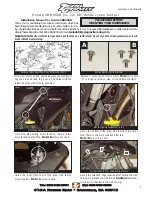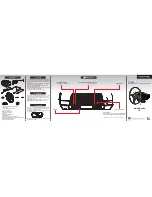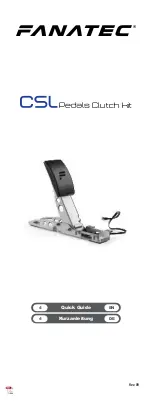
Initial Fill Procedure:
When adding electrolyte, be prepared for an accidental spill.
Working near a sink is recommended.
1.
Remove the protective bottle from the end of the electrode
2.
Remove the membrane cap from the front of the sensor.
Note:
When new sensors are shipped, the membrane cap is not tightened to the sensor
3
. Fill supplied syringe with electrolyte solution.
4.
Place the electrode on a level surface.
5.
Insert syringe needle fully into one of the eight electrode holes while injecting with
electrolyte solution. Slowly injecting the electrolyte solution into the sensor to avoid
introducing air bubbles. The electrode holds approximately 14 milliliters of solution.
Slowly
fi
ll until solution begins to
fl
ow out of holes. Do not allow the solution to run
down the electrode and wet the electrical contacts in the DryLoc connector.
6
. Slowly screw on the membrane cap
fi
nger tight. Do not use tools.
To avoid damage and contamination, do not touch the white membrane surface on
the membrane cap.
The Signet Amperometric Chlorine Electrodes are designed to measure chlorine in fresh, clean water treatment applications.
Free Chlorine electrodes are available in measurement ranges of 0.02 to 2 ppm, 0.05 to 5 ppm or 0.1 to 20 ppm.
Chlorine Dioxide electrodes are available in measurement ranges of 0.02 to 2 ppm.
Electrodes require the Signet 2650 Amperometric Electronics to output a digital (S
3
L) signal to the Signet 8630 Chlorine Transmitter
Features:
• Utilizing smart-sensor technology, this electrode incorporates a unique embedded memory chip within the electrode to
communicate a wide variety of information to the Signet 2650 electronics and Signet 8630 transmitter. Electrode type,
factory calibration data, service time, chlorine range, high and low pH (with optional Signet pH electrode), temperature limits
and more are stored on the chip. This information is accessible via the Signet 8630 transmitter.
• Signet's patented DryLoc
®
connector provides quick assembly and a secure connection. Gold-plated contacts and an O-ring
seal ensure a waterproof and reliable interconnect to the Signet 2650 Amperometric Electronics.
• Integrated temperature element for automatic temperature compensation.
• Separate drive electronics (Signet 2650) allow easy electrode replacement without running new cable.
3-2630.090
Rev. N 05/17
English
CAUTION!
1. Follow instructions carefully to avoid personal injury or damage to electrode.
2. Prior to installation or removal:
a.
Disconnect
fl
ow through system.
b. Drain below sensor level.
3. Con
fi
rm chemical compatibility before use.
4. Do not exceed the maximum pressure or temperature speci
fi
cations.
5. Do not alter product construction.
1. Description
Signet 3-2630-X Amperometric Free Chlorine Electrode
Signet 3-2632-X Amperometric Chlorine Dioxide Electrode
2. Sensor Preparation
1. Description
p.1
5. Maintenance
p.2
9. Overview
p.5
2. Sensor Preparation
p.1
6.
Storage and Disposal
p.3
10. Troubleshooting
p.6
3. Operation
p.2
7. Installation
p.4
11. Ordering
p.7
4. Calibration
p.2
8. Mounting Position
p.4
12. Technical
Data
p.8
*3-2630.090*
• Chlorine sensors are shipped without internal electrolyte solution.
• Prior to installation and supplying power, Chlorine sensors must be
fi
lled with the appropriate internal electrolyte solution.
• Verify the correct electrolyte solution is utilized with the corresponding sensor.
• Free Chlorine and Chlorine Dioxide sensor require different electrolyte solutions.
Avoid skin or eye contact with electrolyte solution.
Wear rubber gloves and goggles.
* Material Safety Data Sheets (MSDS) are available online at www.gfsignet.com.
CAUTION:
DO NOT touch the gold tip or the membrane of the sensor.


























